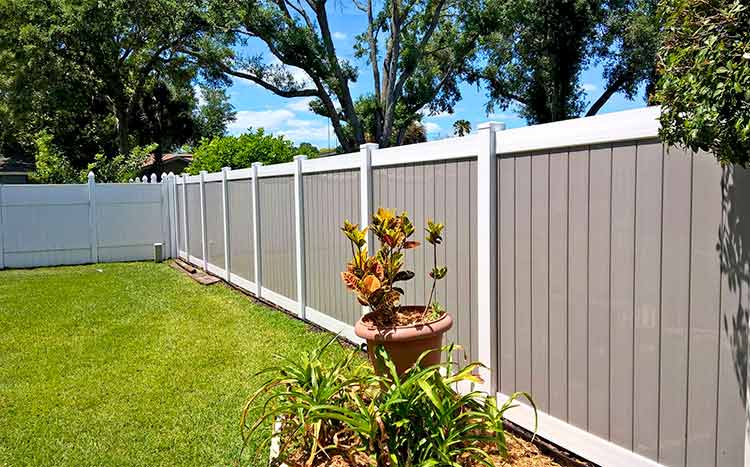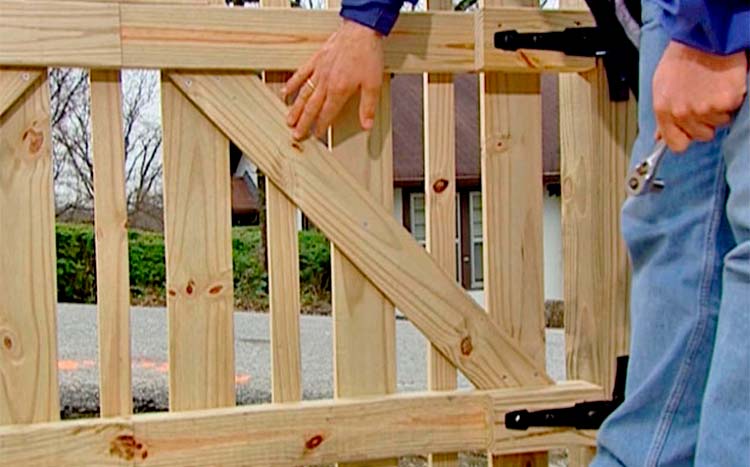Building a fence around your property is essential for protecting the privacy of yourself and your family, especially in areas with high population density. It’s vital to obtain a fence permit, if required, before installation to ensure you’re not breaking any local laws regarding fences.
You will require a permit to build a masonry (brick, stone, or concrete) fence or any fence type that is more than 6 feet high in most states. Also, an encroaching permit is required from the public works department if your proposed fence is in the public right of way.
Requirements for fencing permits can often vary depending on your location. But generally, permit requirements often include drawings of your proposed fence, detailed plans, and payment of permit fees. If you reside in a managed housing development, you may require the consent of your Homeowners Association (HOA), in addition to obtaining a permit from local authorities.

Where do I file for a fence-building permit?
Your first point of call when filing for a fence-building permit is the building and planning office, which is usually located in;
- The municipality office.
- The city hall.
If you live in a rural environment, then your county office or the county court premises is the place to go. A building and planning official will take the details of your project and issue the necessary permits.
Most cities and towns have online permit filing portals on their website where you can upload details of your fence-building project and other documents, make a payment and have your application assessed by a city official to ensure compliance with local building and planning codes without physically going to the city or county office. Online permit applications are generally sent by email.
Cities usually have a detailed process of filing permits, below is an example of the steps involved in filing a fencing permit.
Step 1 – Determine if your proposed fencing project requires a permit and prepare the necessary documents.
Step 2 – Take your documents to the building and planning office for a preliminary review by an official.
Step 3 – Check the city planning records to determine if the proposed fence is in the public right of way. If it does, then you will apply for an enrichment permit.
Step 4 – At this stage, you are ready to submit your application. Pay the application fees and submit your application for a fence-building permit.
Step 5 – If your application is granted, pay the required permit fees and receive your fence building permit.
Still unsure?
HomeGardenGuides.com is a free service that quickly matches you with top-voted local fence contractors. These guys know their stuff and will be able to give you advice on permits and prices.
You can get three estimates fast by real certified experts in your area in just 2 minutes.
- Scroll to the top of the page and enter your Zip code.
- Answer questions about your fencing project.
- Your project details are forwarded to three local experts. They will send you a price estimate for the job and some friendly advice.
IMPORTANT: There is no obligation to hire. This is a free tool and service to be used at your pleasure.

Can the homeowner file a permit?
Most communities allow “owner-builder” permit applications which grant homeowners the privilege of filing their permits at the local building and planning office. In reality, though, most homeowners simply hire a contractor who handles both the permitting process and the actual fence b. Still, any individual can file for a permit as long as the person follows the strict requirements involved in the permit application process.
To apply for a permit, you should submit documents providing the following information:
- The location and identification of the property.
- The name of the contractor or persons who will be installing the fence.
- A detailed description of the proposed construction.
Additional documents may include;
A plot plan which indicates the following –
- The precise location of the proposed fence.
- Any existing driveway or walkway.
- Parking spaces.
- Water wells, utility lines, and poles.
- Any retaining walls and trees on the property.
Some states may require you to submit extra documents showing extensive construction details, including the structural elements of your proposed fencing. Visit your community’s website for more information.
How long will a fence permit approval take?
The length of time it takes to approve a fencing permit application depends on the project’s extent and neighborhood type. But on average, it takes between two to three weeks for a fencing permit application to be approved.
Most delays occur during the filing stage when improperly filed applications are submitted and have to be returned. Also, applying for encroachment permits (if your proposed fence is on a public right of way) and obtaining easement waivers can slow down the permitting process.
If you live in a historic district, officials of the historical landmarks commission may review your permit application to ensure that it meets the requirements, which will increase your application timeframe.
How much does a fence permit cost?
Fence permit costs are not universal, and each city and county has different rates and methods for calculating permit fees based on the following.
- The value of the fencing project.
- The value of the property.
Homeowners pay average costs of between $50 – $400 for a fence permit in 20 cities and towns across America. And although rare, there are instances where a fence permit can cost as high as $1,500. Fence permit fees usually cover administrative expenses, including onsite visits by an inspector.
Building contractors can also obtain a fence permit for their clients at an extra charge of between $50 – $100 depending on your project’s nature, which increases your total permit costs.
What if I don’t get approval?
You may petition the appropriate ordinance or zoning board of appeals in your locality for a review If your application for a fence permit is denied. A petition appealing the refusal can be filed within three days of rejection.
However, it would help convince the board that the following crucial conditions exist to secure a winning appeal.
- The request is in direct response to an unusual or exceptional circumstance or challenge unique to your property.
- That the application for a variance is to enjoy tangible benefits unique to the area and which other property owners in the exact location currently benefit from.
- Granting the variance will not constitute a threat to public safety or endanger the welfare or properties in your immediate neighborhood.
- Granting the variance will not contravene the existing community master plan.
Do I need my neighbor’s consent before applying for a fencing permit?
If the proposed fence is on a shared border adjoining your respective properties, then obtaining a fence permit is an expense that your neighbor is legally required to share with you. And you should have written consent from your neighbor before applying for one. However, some states like California do not require written permission due to the passage of the Good Neighbor Fence Law, which merely requires 30 days’ written notice, along with the construction costs and structural details of the proposed fence.

Do I need a permit for a pool fence?
Yes, you do. You will need to obtain a permit from your local authorities if the proposed pool fence is higher than 4 feet when installed on a residential property or if it exceeds 5 feet in height when installed on a property with more than three residential or commercial units.
Pool fence requirements across each state have slightly different provisions. Still, they have generally based on International Building Code (IBC) specifications in section 305, which states the requirements for “pool barriers.” The International Building Code is the legal building code adopted by most building and planning authorities in America, and it is regularly updated every three years.
In states such as Minnesota, your proposed pool fencing project must undergo a Fence Plan Review, including a series of inspections by a building inspector.
Do I need a registered contractor to build my fence?
Anyone may install a fence, but hiring a registered contractor who has a license to build fencing is a form of protection that offers plenty of benefits. These include:
- Experience: A registered contractor has the experience and equipment to perform a quality job. Fence contractors have a better knowledge of building codes in your area than you or an average handyman. They can also help with the permitting process and help you file applications.
- Insurance: Experienced contractors carry liability insurance covering injury or damage to your fence or proper during the fence installation.
- Professionalism: Licensed contractors are always available to answer your questions concerning the project. They can offer cost-effective fencing options if you are on a budget and propose the most appropriate fence type for your property or neighborhood. They evaluate each stage of the project and are involved in discussions with neighbors when installing a shared fence.
Before hiring a contractor, be sure to conduct both in-person interviews and have him perform a site assessment evaluation. Below is a checklist of essential tasks and questions to ask during your research.
- Verify the contractor’s license and certification.
- Determine if the contractor has insurance.
- Ask for evidence of previous work that you can view.
- Ask for references from past clients.
- Determine how long the contractor has been in business.
- Ask if the contractor does obtain permits on behalf of clients. If yes, inquire about the permitting process and the cost of the service.
- Determine how long it will take to complete the project.
- Find out if the contractor can give an estimate based on on-site inspection.
- Ask if the contractor can sign a written agreement highlighting the job’s details, the cost, and the expected timeline.
Do I need a permit for a fence on a commercial property?
Yes, you do. Commercial fence permits share similar requirements with residential fence permits. Most municipalities limit commercial fencing height to between 6 to 7 feet. Companies that want to install a fence beyond the allowed height limit must apply for a form of variance from their local building authority.
Applying for a commercial building permit can be done in person by the licensed building contractor or online. Required documents for obtaining a commercial fence permit include:
- A permit application.
- A site plan indicating the location of the proposed fencing.
- The fence specification papers.
Also, permit fees are required. Although, some municipalities grant waivers in permit fees for projects inside commercial zones.
FAQ's
Can neighbors attach things to my fence?
If the fence is inside your property then, both sides of the fence belong to you, and your neighbor has no right to attach anything to your fence without your permission.
However, if the fence is a shared fence on a common boundary between your properties, your neighbor has equal rights to his side of the fence and may attach things provided it does not cause damage to your side of the fence.
What is the max height of a privacy fence?
Privacy fences are usually limited to 4 feet in height for the front yard and 6 feet tall for the backyard. Local building officials restrict the height of front yard privacy fences because tall privacy fences tend to block vehicle sightlines and create blind spots.
What is the cheapest fence to build?
At $1 – $5 per linear foot, a 6 feet tall treated pine privacy fence is the least expensive fencing option for your home.








